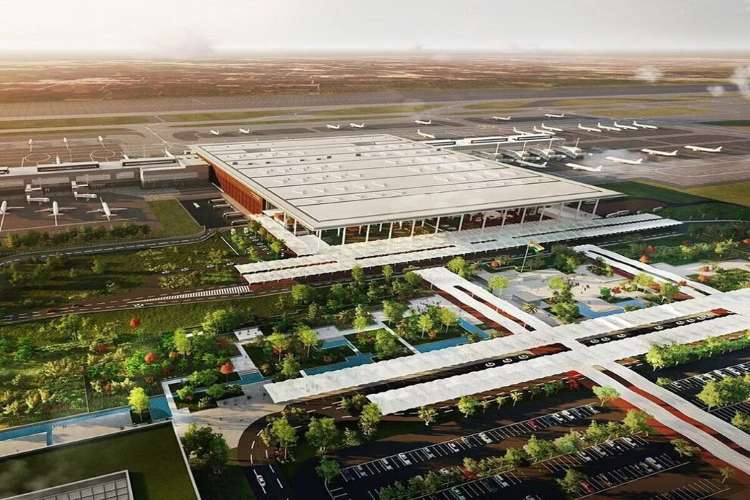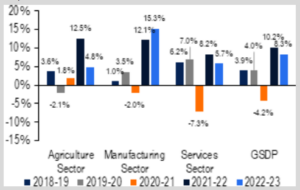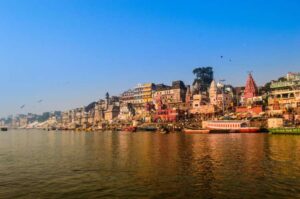
Once counted among the BIMARU states — an acronym used pejoratively to describe backwardness in Bihar, Madhya Pradesh, Rajasthan, and Uttar Pradesh — India’s most populous state is attempting to rebrand itself as an economic powerhouse. Chief Minister Yogi Adityanath, presenting his government’s eight-year report card, portrayed UP as a rising growth engine powered by industrial investment, infrastructure expansion, and targeted welfare schemes. While headline indicators show improvement, a closer analysis suggests that the transformation remains uneven and many structural challenges persist.
Uttar Pradesh’s gross state domestic product (GSDP) has doubled from Rs 12.75 lakh crore in 2016–17 to an estimated Rs 24.99 lakh crore today. This growth has elevated the state to the second spot nationally in terms of GSDP size. However, the average income of its citizens tells a different story. UP’s per capita income stands at just Rs 94,000, far below the national average of Rs 184,205. This ranks the state near the bottom among Indian states.
Sector-wise growth in GSDP

READ I India’s GDP growth prospects face global turbulence
Uttar Pradesh’s $1 trillion dream
The state government has set an audacious goal of turning UP into a $1 trillion economy by 2029. With its current GSDP hovering around $335 billion, this would require sustained annual growth of 24% — a target that economists consider unrealistic.
Over the past eight years, UP has maintained a nominal growth rate of around 10% on a low base. This is still way below the pace needed to meet the 2029 target. Moreover, achieving such exponential growth would require massive private and public investment, policy stability, and structural reforms on an unprecedented scale.

The state has certainly improved its appeal to investors. Proposals worth nearly ₹40 trillion have been announced, and the government claims these could generate up to 15 million jobs. Projects like the Defence Industrial Corridor and semiconductor manufacturing units by Foxconn and HCL near the upcoming Jewar Airport signal a diversification beyond traditional sectors.
These developments are noteworthy, especially for a northern state where high-tech industry has historically lagged. UP has taken cues from industrialised states like Gujarat and Tamil Nadu, even launching its own semiconductor policy. However, investment proposals are not the same as investments realised. Many mega projects are still in the early stages, and their long-term impact on employment and economic diversification remains to be seen.
Agriculture and welfare
Agriculture, the bedrock of UP’s economy, has seen steady improvement. Food grain production rose from 557 lakh metric tonne in 2016–17 to 668 lakh metric tonne in 2023–24. The government also waived loans worth Rs 36,000 crore for small and marginal farmers and completed long-pending irrigation projects.
On the social welfare front, the number of pension beneficiaries doubled to over 1 crore, and the monthly payout rose from Rs 300 to Rs 1,000. School enrolment increased by 50 lakh students, and anti-cheating reforms brought greater credibility to examinations.
However, these efforts often fall short of transformative change. Agricultural growth still suffers from over-reliance on monsoons, lack of crop diversification, and water stress. Critics argue that loan waivers are temporary palliatives rather than structural solutions. Similarly, while enrolment has increased, the quality of education remains poor, limiting social mobility.
The government reports a drop in unemployment from 19% in 2016–17 to 3% today, figures that contrast sharply with national trends and raise concerns about data reliability. While 8 lakh government jobs and 2 crore self-employment opportunities through MSMEs are impressive on paper, many of these jobs may be low-paying and precarious.
The MSME sector has grown, but the sustainability of self-employment depends heavily on access to credit, technology, and market linkages—areas where many small businesses continue to struggle.
Poverty, pollution, inequality
Direct benefit transfers worth over Rs 10 lakh crore, coupled with welfare schemes like free ration and Ujjwala gas connections, have helped reduce poverty in parts of the state. Yet, multidimensional poverty continues to affect nearly 70% of the population in several districts, pointing to glaring regional disparities.
Environmental degradation is another major concern. Cities like Kanpur and Varanasi face severe air and water pollution, while social challenges like caste discrimination, gender inequality, and communal tensions remain deeply embedded.
Uttar Pradesh has come a long way from its BIMARU past. It has positioned itself as a key player in India’s economic future, and its efforts to attract investment and expand infrastructure are commendable. But the journey is far from over.
The state must address deep-rooted issues such as low per capita income, poor human development indicators, and social inequalities to translate macroeconomic growth into broad-based prosperity. A $1 trillion economy is a worthy ambition, but without inclusive development and institutional reforms, it risks becoming a slogan rather than a milestone.
